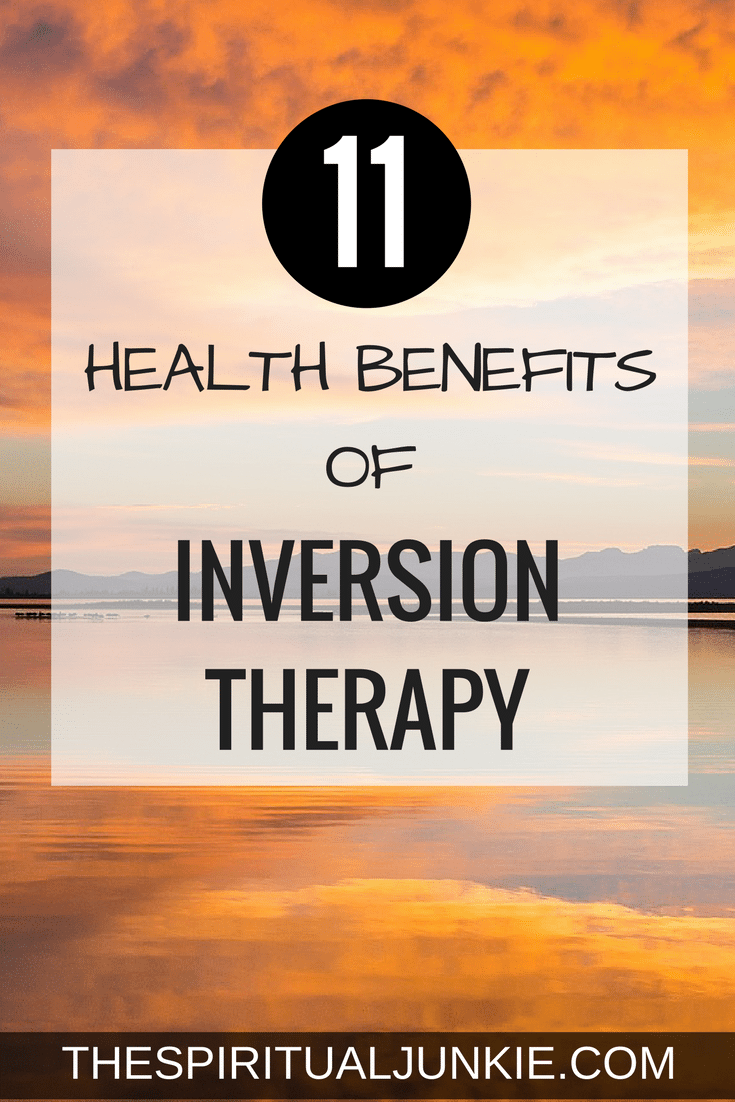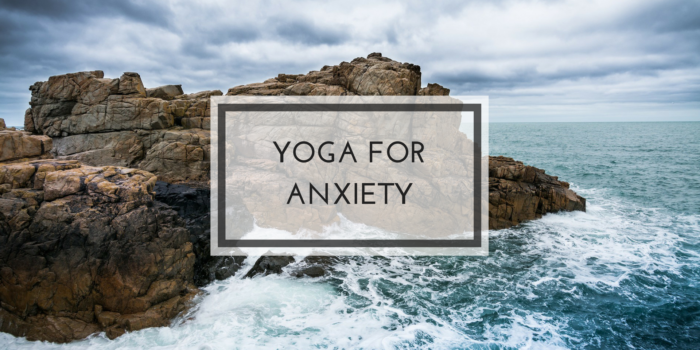Over half of people who invert on a regular basis do so to relieve back pain, but to discount inversion as simply a back pain remedy would be to ignore a wide range of benefits that can be easily achieved by a passive, or more active, inversion session.
Inversion helps your body to recover from the compressive effects of gravity and daily activities. Doctors, physical therapists and sports trainers recognize inversion as a safe and effective form of therapy for the spine and weight-bearing joints. In fact, the US Army is writing Inversion into its worldwide physical training manual.
These are just some of the many benefits of inversion table therapy:
![]() Reduces back & neck pain – Using your own body weight as a natural form of traction, inversion elongates the spine by increasing the space between the vertebrae, relieving the pressure on discs, ligaments and nerve roots.
Reduces back & neck pain – Using your own body weight as a natural form of traction, inversion elongates the spine by increasing the space between the vertebrae, relieving the pressure on discs, ligaments and nerve roots.
![]() Boosts lymphatic flow – Tense muscles produce spasms and pain by reducing the supply of oxygen and by reducing blood and lymph flow, allowing the accumulation of waste chemicals in the muscles. Inverting yourself to as little as 25° for even a few minutes can help relax tense muscles and speed the flow of lymphatic fluids which flush out the body’s wastes and carry them to the blood stream. The faster this waste is cleared, and fresh supplies of oxygen are introduced, the faster stiffness and pain in the muscles can disappear. A study conducted by physiotherapist L.J. Nosse found that, “EMG (electromyographic) activity, an indicator of muscle pain, declined over 35% within ten seconds of assuming the inverted position.” (Nosse, L: Inverted Spinal Traction. Arch Phys Med Rehab 59: 367-370, Aug 78). This explains why inversion also boosts post-exercise muscle recovery.
Boosts lymphatic flow – Tense muscles produce spasms and pain by reducing the supply of oxygen and by reducing blood and lymph flow, allowing the accumulation of waste chemicals in the muscles. Inverting yourself to as little as 25° for even a few minutes can help relax tense muscles and speed the flow of lymphatic fluids which flush out the body’s wastes and carry them to the blood stream. The faster this waste is cleared, and fresh supplies of oxygen are introduced, the faster stiffness and pain in the muscles can disappear. A study conducted by physiotherapist L.J. Nosse found that, “EMG (electromyographic) activity, an indicator of muscle pain, declined over 35% within ten seconds of assuming the inverted position.” (Nosse, L: Inverted Spinal Traction. Arch Phys Med Rehab 59: 367-370, Aug 78). This explains why inversion also boosts post-exercise muscle recovery.
![]() Provides care & feeding for discs – Your discs have three jobs: to separate the vertebrae, provide flexibility to the spine and to act as shock absorbers. Disc separation is especially important since all communication between the brain and the body is via nerves that pass between each vertebra. Insufficient distance between the vertebrae can result in nerve root pressure and pain. When you are sleeping, “a non-weight bearing activity”, your discs expand as they soak up fluid and nutrients and increase the length of your spine by as much as 3/4″, but you will lose this height by the end of the day. Inverting is the most effective posture that allows your discs to recover from the constant pressure placed on them during your daily activities. Even when you are lying down, disc pressure remains at 25% of that in standing. Inverting to 60 degrees is necessary to reduce the disc pressure to zero. (Nachemson, A and Elfstrom, G; Intravital Dynamic Pressure Measurements in Lumbar Discs. Scandinavian Journal of Rehab Medicine, supplement, 1970)
Provides care & feeding for discs – Your discs have three jobs: to separate the vertebrae, provide flexibility to the spine and to act as shock absorbers. Disc separation is especially important since all communication between the brain and the body is via nerves that pass between each vertebra. Insufficient distance between the vertebrae can result in nerve root pressure and pain. When you are sleeping, “a non-weight bearing activity”, your discs expand as they soak up fluid and nutrients and increase the length of your spine by as much as 3/4″, but you will lose this height by the end of the day. Inverting is the most effective posture that allows your discs to recover from the constant pressure placed on them during your daily activities. Even when you are lying down, disc pressure remains at 25% of that in standing. Inverting to 60 degrees is necessary to reduce the disc pressure to zero. (Nachemson, A and Elfstrom, G; Intravital Dynamic Pressure Measurements in Lumbar Discs. Scandinavian Journal of Rehab Medicine, supplement, 1970)
![]() Cardiovascular fitness – The simple act of inverting the body can actually help to stimulate circulation, resulting in a mild, even relaxing, cardiovascular workout.
Cardiovascular fitness – The simple act of inverting the body can actually help to stimulate circulation, resulting in a mild, even relaxing, cardiovascular workout.
![]() Relieves stress – For centuries yoga practitioners have recognized the concept of turning the body upside down to find relaxation. Inversion is calming, rejuvenating and helps reduce muscle tension that may have been caused by stress.
Relieves stress – For centuries yoga practitioners have recognized the concept of turning the body upside down to find relaxation. Inversion is calming, rejuvenating and helps reduce muscle tension that may have been caused by stress.
![]() Train for balance and orientation – The performance of inverted activities can be enhanced through inversion training. Inversion helps to develop balance awareness, which occurs when the upper regions of the inner ear are stimulated. Skydivers, gymnasts, springboard divers, and scuba divers find that inversion therapy fine-tunes the body and inner ear to the inverted world. Inversion therapy has also been used to normalize the ear canal as a treatment for motion sickness.
Train for balance and orientation – The performance of inverted activities can be enhanced through inversion training. Inversion helps to develop balance awareness, which occurs when the upper regions of the inner ear are stimulated. Skydivers, gymnasts, springboard divers, and scuba divers find that inversion therapy fine-tunes the body and inner ear to the inverted world. Inversion therapy has also been used to normalize the ear canal as a treatment for motion sickness.
![]() “Decongests” internal organs – As the body ages, internal organs (kidneys, stomach, intestines) begin to prolapse as a result of the constant downward force of gravity. “Middle-age spread” (that spare tire around the waste), apart from weight gain, is due to the relocation of internal organs. Digestion and waste elimination problems are also common symptoms of organs going south. Inversion helps prolapsed organs resume their normal shape and place in the body.
“Decongests” internal organs – As the body ages, internal organs (kidneys, stomach, intestines) begin to prolapse as a result of the constant downward force of gravity. “Middle-age spread” (that spare tire around the waste), apart from weight gain, is due to the relocation of internal organs. Digestion and waste elimination problems are also common symptoms of organs going south. Inversion helps prolapsed organs resume their normal shape and place in the body.
![]() Relieves varicose veins – When inverting, you are helping your heart to clear the blood from your feet, legs, and lower body. This allows the blood in your limbs to circulate more easily, which may help to drain blood from varicose veins.
Relieves varicose veins – When inverting, you are helping your heart to clear the blood from your feet, legs, and lower body. This allows the blood in your limbs to circulate more easily, which may help to drain blood from varicose veins.
![]() Increases oxygen to the brain – Peter Russell notes in The Brain Book that the deterioration of the brain is not directly linked to age alone. Rather, this deterioration is caused by hardening arteries and high blood pressure, both of which decrease the supply of oxygen to the brain. Thus a major step in reducing mental deterioration (or senility) over time may simply be increasing the oxygen supply to the brain. Keeping the brain active and well supplied with oxygen may help maintain your brain function and mental sharpness throughout your entire life.
Increases oxygen to the brain – Peter Russell notes in The Brain Book that the deterioration of the brain is not directly linked to age alone. Rather, this deterioration is caused by hardening arteries and high blood pressure, both of which decrease the supply of oxygen to the brain. Thus a major step in reducing mental deterioration (or senility) over time may simply be increasing the oxygen supply to the brain. Keeping the brain active and well supplied with oxygen may help maintain your brain function and mental sharpness throughout your entire life.
![]() Relieves depression – Inversion therapy promotes an overall sense of well being, an increased sense of energy and a deep relaxation. This combined with the reduction in pain that many people buy the table for may explain why inversion therapy is being increasingly used to reduce depression.
Relieves depression – Inversion therapy promotes an overall sense of well being, an increased sense of energy and a deep relaxation. This combined with the reduction in pain that many people buy the table for may explain why inversion therapy is being increasingly used to reduce depression.
![]() Height maintenance – Inversion can help to reduce the loss in height that occurs as we age.
Height maintenance – Inversion can help to reduce the loss in height that occurs as we age.











